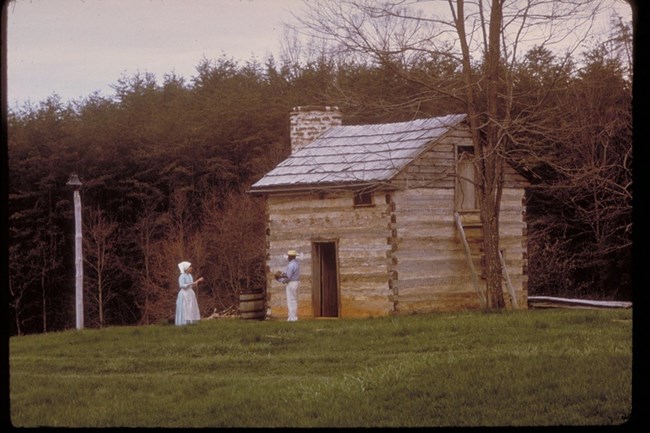Learn about NRCAs
The Natural Resource Condition Assessment (NRCA) Program provides framework, funding, and publishing support to parks to aid in the synthesis and documentation of natural resource conditions. Condition assessment reports are a tool to describe selected park resources, and record a snapshot of their current condition, identify trends, and identify potential or current threats and stressors. Understanding the condition and trend of natural resources is key for parks and NPS planners to appropriately prioritize and allocate stewardship resources.

NPS Photo.
After the Civil War, Washington became the first principal of Tuskegee Normal and Industrial School. Later as an adviser, author and orator, his past would influence his philosophies as the most influential African American of his era. The National Monument is located in Franklin County, Virginia just east of the Blue Ridge Parkway within Virginia’s fifth Congressional District. It comprises a total of 239 acres located in the rolling hills of the Virginia Piedmont region.
Traditional NRCA Report: 2017
In an effort to better understand the natural resources present in the national monument, a Natural Resource Condition Assessment was written and published in 2017. NPS staff compiled data necessary for the assessment. Selected resource topics (resources, and resource indicators and measures) were chosen to be evaluated in this assessment:
- Ozone |
- Dissolved Oxygen |
|||||
- Wet nitrogen deposition |
- Water temperature |
|||||
- Wet sulfur deposition |
- Water pH |
|||||
- Mercury deposition |
- Nitrates |
|||||
- Visibility |
- Macroinvertibrates |
|||||
- Birds |
- Invasive plant species |
|||||
- Fish |
- Forest land cover |
|||||
- Mammals |
- Riparian buffers |
|||||
- Amphibians and reptiles |
- Impervious surfaces |
|||||
- Forest regeneration |
- Grasslands |
Overall, the natural resources of the national monument were found to warrant moderate concern, reaching 64% of desired thresholds. Twelve natural resources were in good condition (ozone, dissolved oxygen, water temperature, water pH, birds, fish, mammals, forest regeneration, forest land cover, buffer cover, impervious surface, and grassland patches); three resources had a condition of moderate concern (wet sulfur deposition, amphibians and reptiles, and invasive plant species); and the remaining five resources had conditions of significant concern (wet nitrogen deposition, visibility, mercury deposition, nitrate, and macroinvertebrates). As a small park, the condition of the Booker T. Washington National Monument landscape is inextricably linked to activities on lands surrounding the park. Partnerships and regional collaboration will be important to maintaining this historic landscape in good condition.
For other reports and natural resource datasets visit the NPS Data Store.
Source: NPS DataStore Collection 7765 (results presented are a subset). To search for additional information, visit the NPS DataStore.
Last updated: February 25, 2022
